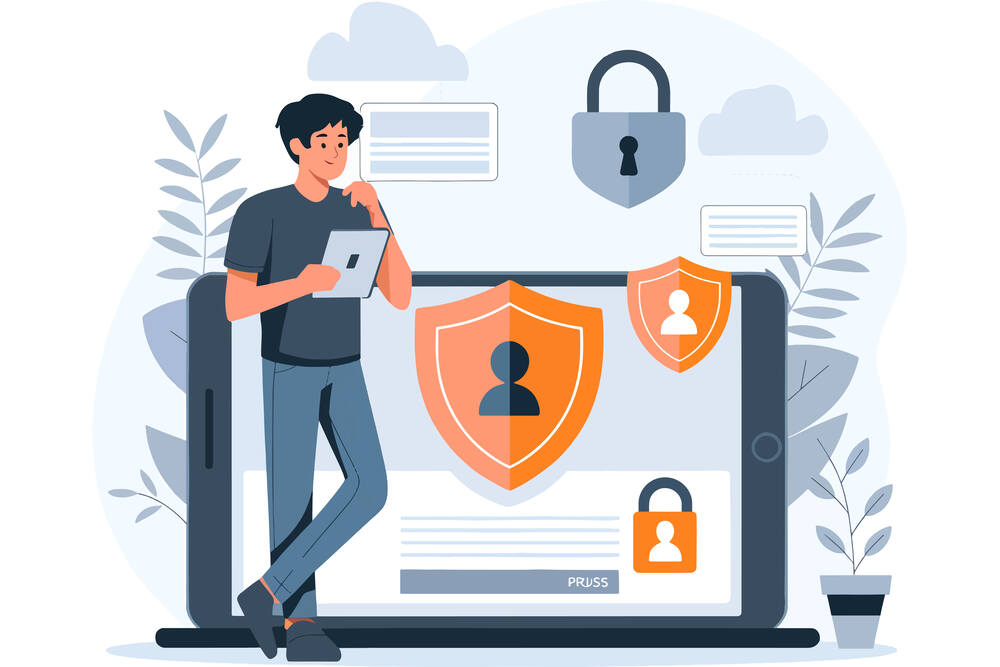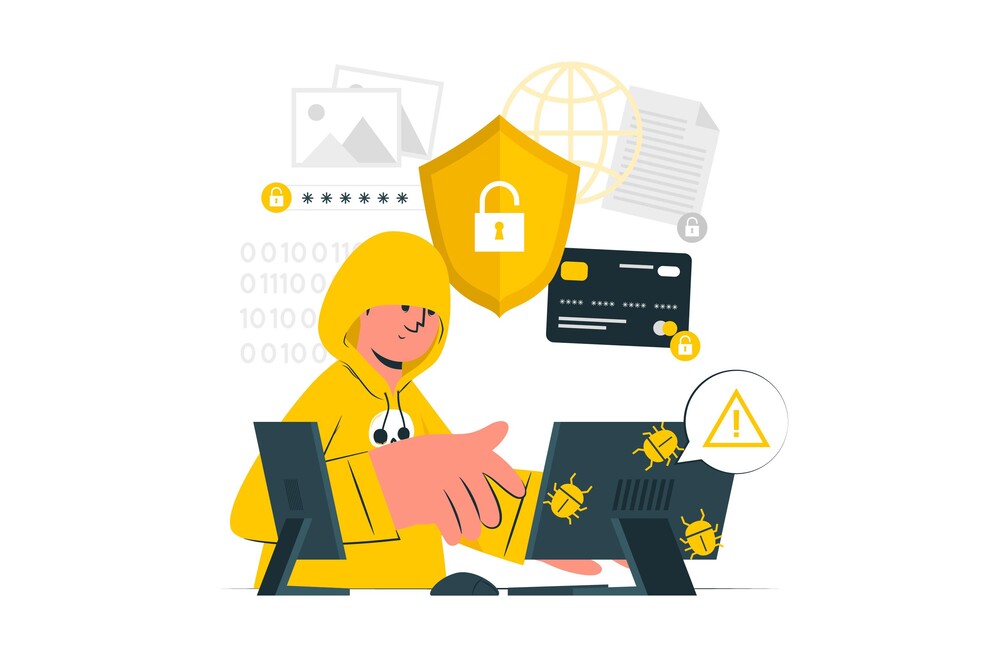
Learn essential data security practices to protect your digital assets from cyber threats. Discover strategies for safeguarding sensitive information, enhancing cybersecurity, and building trust in a digital-first world.
Data security has become a major priority for everyone. With our growing reliance on digital information, it’s essential to keep data safe from common cyber threats like breaches and attacks.
Both individuals and organizations need to understand the basics of data security and follow best practices to reduce these risks. A solid security plan not only protects valuable information but also strengthens trust and confidence in online interactions.
Understanding Digital Assets
Digital assets are a broad range of electronically stored data that are valuable. This includes things like personal IDs, financial information, and intellectual property. As technology becomes more important, understanding digital assets is key to managing data well.
Knowing and classifying digital assets helps build strong cybersecurity plans. When organizations know their digital assets, they can protect their online information better. This also helps follow laws like GDPR and CCPA, which focus on keeping data safe and private.

To manage digital assets well, organizations should:
- Inventory all types of digital assets.
- Classify assets based on sensitivity and value.
- Implement security measures tailored to the nature of each asset.
- Regularly review and update asset classifications as needed.
Importance of Data Security
Organizations face a growing number of cyber threats that put sensitive information at risk. These threats can lead to data breaches, resulting in significant financial losses and damage to a company’s reputation. Protecting data isn’t just about staying compliant—it’s also key to building and maintaining customer trust.
Companies that overlook data security not only risk legal issues but may also struggle to recover after a breach. Strong data protection practices improve cybersecurity, helping organizations operate smoothly and remain resilient, especially as cyber-attacks become increasingly frequent and sophisticated.
| Threat Type | Description | Potential Impact |
| Phishing | Deceptive emails or messages aimed at obtaining sensitive information. | Data breaches result in financial loss and identity theft. |
| Malware | Malicious software is designed to damage or disrupt systems. | Loss of critical data and service interruptions. |
| Ransomware | Software that encrypts data, demanding ransom for decryption. | Severe operational disruptions and potential extortion costs. |
Organizations must be proactive in their approach to data security. Implementing strong controls and constantly watching for weak spots is crucial. The growing problem of data breaches shows the need for good strategies to protect assets and vital information.
Key Data Security Concepts
It’s crucial to grasp key data security concepts to build a solid security plan. Encryption and access control are top priorities in this setup. They work together to keep sensitive data safe from unwelcome access and leaks.
Encryption: Protecting Your Data
Encryption is key to keeping data secure. It turns data into a code that only authorized people can read. This keeps the data’s integrity safe when it’s sent or stored. Techniques like Advanced Encryption Standard (AES) and RSA offer varying security levels. They play a big part in protecting data.
Access Control: Who Can See Your Data?
Access control is crucial for limiting data access to unauthorized users. By using methods like role-based access control (RBAC), organizations can set who gets to see what. This ensures that only the right people have access. It’s a smart way to keep data safe and limit risk.
Implementing Effective Cybersecurity Measures
Strong cybersecurity is a must for any group wanting to keep data safe. A strong security plan is key to stopping threats and protecting important info. Firewalls and regular updates play big roles in keeping cyber defenses strong.
Using Firewalls for Enhanced Protection
Firewalls are crucial in defending against unwanted access. They filter traffic, creating a safe barrier between trusted and untrusted networks. By allowing only good traffic, they lower the chance of cyberattacks. Having both hardware and software firewalls adds extra layers of safety against attacks.
Regular Software Updates and Patching
It’s vital to keep your software current for top cybersecurity. Updating software and patching holes are key to fixing weak spots that hackers might use. Updates often have fixes for these gaps, making your system safer. Using automated updates ensures your protection is always up to date, keeping your data safer and lowering the risks from online threats.
| Cybersecurity Measure | Description | Benefits |
| Firewalls | Filtration of network traffic to prevent unauthorized access. | Enhanced security, controlled access, and improved network performance. |
| Software Updates | Regular installation of updates to fix vulnerabilities. | Mitigation of risks, protection from new threats, and better performance. |
| Patching | Quick fixes for specific vulnerabilities in software. | Immediate risk reduction, and prevention of exploit attempts. |
Data Privacy and Compliance Regulations
Companies are watched closely on how they handle personal info. They must follow rules set by laws like GDPR and CCPA. These laws lay out clear rules for protecting consumer data.
It’s important for any company dealing with personal info to understand these laws. If they don’t, they could face big fines and damage their reputation. To prevent this, companies should follow data privacy best practices and train their employees well.
- Conduct regular compliance audits to evaluate adherence to standards.
- Establish clear procedures for data handling to promote transparency.
- Implement robust data governance frameworks to oversee data lifecycle management.
Keeping data private and following the laws is about more than just security. It builds trust with customers, which leads to a stronger, more digital-friendly business.
| Regulation | Key Focus Areas | Enforcement Agency | Potential Fines |
| GDPR | Data subject rights, data processing transparency | European Data Protection Board | Up to €20 million or 4% of global annual revenue |
| CCPA | Consumer rights, data sales disclosures | California Attorney General | Up to $7,500 per violation |
Identifying Risks: Risk Management Strategies
Protecting digital assets is crucial in today’s world. We must identify risks, check for weak spots, and take steps to stop potential threats. This ensures our data stays safe.
Assessing Vulnerabilities in Your System
Checking systems for vulnerabilities means looking closely at software, hardware, and how they connect. This finds weak points that hackers could use. By following a set plan, we can strengthen these areas.
- Conducting regular software updates to patch known vulnerabilities
- Performing penetration testing to reveal security gaps
- Reviewing access controls to ensure that only authorized personnel have access
Conducting Risk Assessments Regularly
Doing risk assessments often is key to strong cybersecurity. It keeps us ahead of sneaky threats by constantly reevaluating risks. This process includes some crucial steps:
- Identifying risks associated with new technologies and potential integration challenges
- Evaluating the impact of recent security incidents on the overall risk landscape
- Adjusting risk management strategies based on the latest data and threat intelligence
With a solid risk management plan, we can better spot risks. This improves how we protect our digital assets.
| Risk Assessment Element | Description | Importance |
| Risk Identification | Finding potential risks that could affect digital assets | Establishes a baseline for further assessments |
| Risk Analysis | Evaluating the likelihood and impact of identified risks | Informs decision-making on appropriate mitigation strategies |
| Risk Evaluation | Prioritizing risks based on their significance | Guides resource allocation for risk mitigation efforts |
| Risk Treatment | Implementing measures to mitigate identified risks | Protects against potential data breaches and loss |
Data Breach Response: What to Do When It Happens
Having a strong plan for data breaches is a must for any group. When a breach happens, reacting quickly and smartly is key. A good plan means you handle things well, reducing harm.
Creating an Incident Response Plan
An incident response plan is like a map for dealing with cyber attacks. It should cover:
- Identifying what was breached and how much was affected
- Who is in charge of what during a breach
- How to collect and keep evidence safe
- Ways to remove the threat and fix systems
It’s crucial to keep this plan updated and practice it often. This keeps teams ready and makes sure the steps still work well.
Communication Strategies During a Data Breach
How you talk about a breach is very important. Being open can help calm people down and rebuild trust. Key parts of good communication include:
- Timely Notifications: Quickly telling people what happened and what risks they face.
- Consistent Updates: Keeping everyone informed as more details become known.
- Clear Messaging: Speaking plainly about what’s going on and how to get help.
- Engagement with Media: Working well with the media to shape the story of the breach.
By focusing on communication, groups can handle a breach better, limit wrong information, and keep their good name with customers.
| Incident Response Plan Elements | Importance |
| Identification Procedures | Chelps know about breaches fast. |
| Roles and Responsibilities | Makes it clear who does what. |
| Evidence Preservation | Helps with good investigation and following the law. |
| Recovery Procedures | Lowers downtime and gets things running again quickly. |
Data Security Best Practices for Individuals
It’s key that everyone takes steps to secure their info. Strong passwords are your first guard against hackers. Adding multi-factor authentication (MFA) makes your accounts even safer.
Utilizing Strong Passwords and MFA
Passwords need to be tough to crack. They should mix up big and small letters, numbers, and symbols. Turning on multi-factor authentication adds crucial security. With MFA, even if someone guesses your password, they can’t get in without another check. This could be a code sent to your phone or a fingerprint.
Avoiding Phishing Scams and Social Engineering
Dodging phishing scams and sneaky tricks is also critical. Hackers trick people into giving away private info. Always be wary of weird emails or texts asking for personal details. Staying alert and knowing these security tips can protect your digital life from hackers.
Ready to innovate and transform your business? Say hello to CodeBeavers!
If you are looking for ways to bring your product or app ideas to life? We’ve got your back. CodeBeavers has the tools and engineers you need to make your projects come alive. With CodeBeavers, you’ll be able to build faster than ever, deploy code with ease, and scale like never before. Send us your requirements now, and let’s start winning together.



